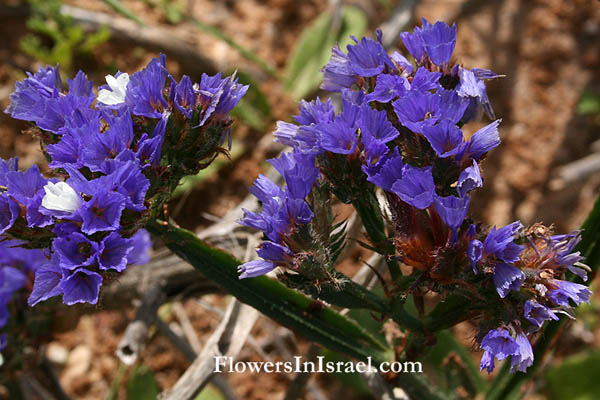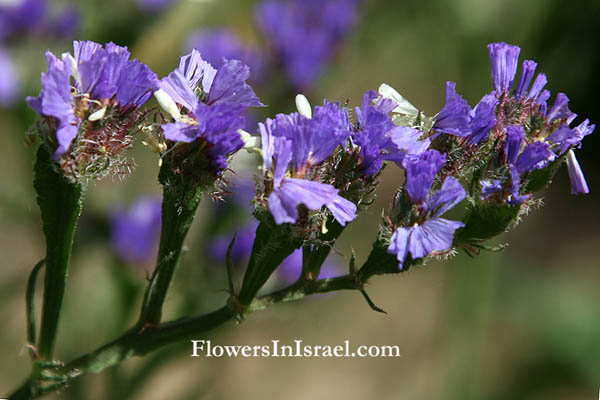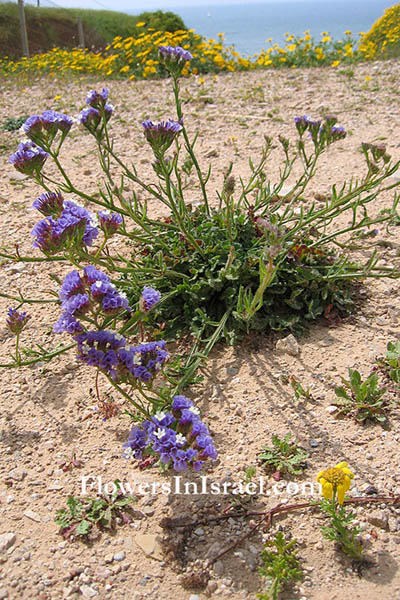Cut-Leaf Sea-Lavender,
Hebrew: עדעד כחול, Arabic: العويذران المتعرج
| Scientific name: | Limonium sinuatum (L.) Miller | |
| Synonym name: | Statice sinuata L. | |
| Common name: | Cut-Leaf Sea-Lavender | |
| Hebrew name: | עדעד כחול | |
| Arabic name: | العويذران المتعرج | |
| Family: | Plumbaginaceae, עפריתיים |

|
| Life form: | Hemicryptophyte | |
| Stems: | 45-60 cm high, inflorescence branches sometimes green and more or less prominently winged | |
| Leaves: | Alternate, rosette, entire, pinnately lobed margins | |
| Inflorescence: | Terminal corymbs | |
| Flowers: | Calyx lobes blue; corolla lobes cream | |
| Fruits / pods: | Utricles ca. 5 mm | |
| Flowering Period: | March, April, May, June | |
| Habitat: | Mediterranean strand | |
| Distribution: | Mediterranean Woodlands and Shrublands | |
| Chorotype: | Mediterranean | |
| Summer shedding: | Perennating |

Derivation of the botanical name: Limonium, Greek leimon, a meadow; in allusion to the common habitat in salt meadows. sinuatum , sinuate, with a wavy margin; wavy edged. Statice, Latin, an astringent plant; Greek statikos, causing to stand, astringent; Sea lavender. The Hebrew name: עדעד, ad'ad , reduplication of עד: eternity, perpetuity; probably, like עד, derived from עדה and lit. meaning ‘progress in time’. According to some scholars, however, עד is related to Arabic ghad (= morning), taken in the sense ‘late future’.

|